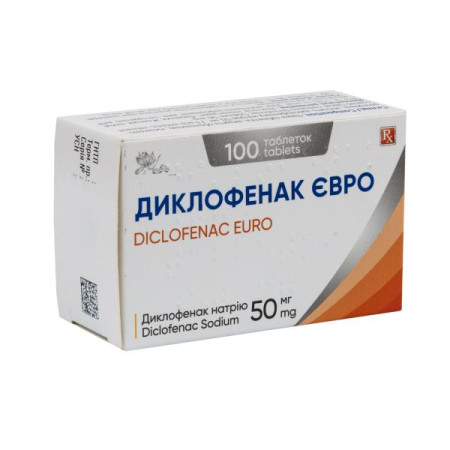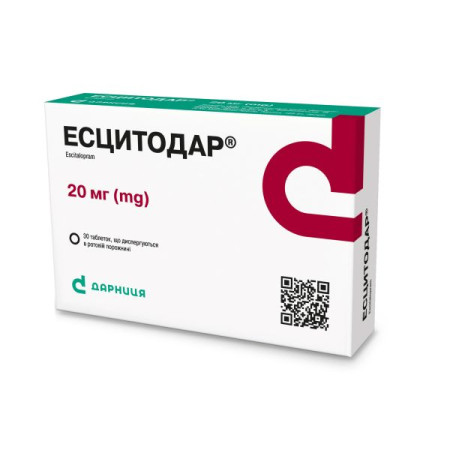Ultrex FL vaginal suppositories 100 mg No. 3

Instructions for use Ultrex FL vaginal suppositories 100 mg No. 3
Composition
active ingredient: clindamycin;
1 suppository contains 100 mg of clindamycin in the form of clindamycin phosphate;
excipient: lipophilic base*
* Hard fat with added glycerol monooleate.
Dosage form
Vaginal suppositories.
Main physicochemical properties: white or almost white suppositories of cigar-shaped shape.
Pharmacotherapeutic group
Antimicrobial and antiseptic agents, except in combination with corticosteroids. Antibiotics. Clindamycin. ATX code G01A A10.
Pharmacological properties
Pharmacodynamics.
Mechanism of action. Clindamycin is a lincosamide antibiotic that inhibits bacterial protein synthesis by acting on bacterial ribosomes. The antibiotic binds primarily to the 50S ribosomal subunit and affects the translation process. Although clindamycin phosphate is inactive in vitro, in vivo it is rapidly hydrolyzed to clindamycin, which exhibits antibacterial activity.
Clindamycin, like most protein synthesis inhibitors, is predominantly bacteriostatic. Its efficacy is related to the length of time that the concentration of the active substance remains above the MIC (minimum inhibitory concentration) of the pathogen.
Resistance to clindamycin most often arises through modification of the target site on the ribosome, usually by chemical modification of RNA bases or point mutations in RNA or sometimes in proteins. Cross-resistance has been demonstrated in some organisms in vitro between lincosamides, macrolides, and streptogramin B. Cross-resistance has been demonstrated between clindamycin and lincomycin.
In vitro susceptibility: Clindamycin has been shown to be active in vitro against the following strains of organisms known to be associated with bacterial vaginosis: Bacteroides spp., Gardnerella vaginalis, Mobiluncus spp., Mycoplasma hominis, Peptostreptococcus spp.
Standard methodology for susceptibility testing of potential bacterial vaginosis pathogens, Gardnerella vaginalis and Mobiluncus spp., has not been established. Breakpoints for susceptibility of Gram-negative and Gram-positive anaerobes to clindamycin have been published by EUCAST. Clinical isolates that are susceptible to clindamycin and resistant to erythromycin should also be tested for induced resistance to clindamycin using the D-test. However, the breakpoints are intended to guide systemic antibiotic treatment rather than topical therapy.
Pharmacokinetics.
Absorption The systemic absorption of clindamycin was evaluated following intravaginal administration of 1 suppository of clindamycin phosphate once daily (equivalent to 100 mg of clindamycin) to 11 healthy female volunteers for 3 days. Approximately 30% (range 6% to 70%) of the administered dose was systemically absorbed by day 3 of administration as measured by the area under the concentration-time curve (AUC). As a comparison, systemic absorption was investigated following intravenous administration of a subtherapeutic dose of 100 mg of clindamycin phosphate to the same volunteers who were administered a vaginal cream containing 100 mg of clindamycin phosphate. The mean area under the curve (AUC) after 3 days of suppository administration was 3.2 μg h/mL (range 0.42 to 11 μg h/mL). Cmax was achieved on the 3rd day of suppository administration and averaged 0.27 μg/ml (range 0.03 to 0.67 μg/ml) and was observed approximately 5 hours after administration (range 1 to 10 hours). In comparison, AUC and Cmax after a single intravenous administration averaged 11 μg h/ml (range 5.1 to 26 μg h/ml) and 3.7 μg/ml (range 2.4 to 5 μg/ml), respectively. The mean elimination half-life after suppository administration was 11 hours (range 4 to 35 hours) and is believed to be absorption-limited.
The results of this study showed that the systemic exposure of clindamycin (based on AUC) when administered as a suppository was on average 3-fold lower than after a single intravenous administration of a subtherapeutic dose of 100 mg of clindamycin. Compared with a similar dose of clindamycin administered as a vaginal cream, the systemic absorption of the suppository was approximately 7-fold higher than that of the vaginal cream, with mean AUC and Cmax values of 0.4 μg h/mL (range 0.13 to 1.16 μg h/mL) and 0.02 μg/mL (range 0.01 to 0.07 μg/mL), respectively. In addition, the recommended daily and total dose of clindamycin in suppositories for intravaginal administration is much lower than that typically used with oral or parenteral clindamycin (when 100 mg of clindamycin is administered daily for 3 days as a suppository, the amount of clindamycin absorbed is about 30 mg per day compared with 600–2700 mg per day for 10 days or more with oral or parenteral administration). In general, the systemic exposure to clindamycin from vaginal suppositories is much lower than the systemic exposure from a therapeutic dose after oral clindamycin hydrochloride (2–20 times lower) or parenteral clindamycin phosphate (40–50 times lower).
Indication
Bacterial vaginosis (previous names: hemophilic vaginitis, gardnerella vaginitis, nonspecific vaginitis, corynebacterial vaginitis or anaerobic vaginosis).
Contraindication
Hypersensitivity to the active substance, lincomycin, or to any of the excipients listed in the "Composition" section.
ULTREX FL is also contraindicated in patients with a history of antibiotic-associated colitis.
Interaction with other medicinal products and other types of interactions
There is no information on the simultaneous use of ULTREX FL with other vaginal medications.
When administered systemically, clindamycin phosphate has neuromuscular blocking properties that may potentiate the effects of other neuromuscular blocking agents. Therefore, it should be used with caution in patients taking such agents (see sections 4.8 and 5.2).
Antagonism (induced resistance) has been observed in vitro between clindamycin and erythromycin against a subset of macrolide-resistant bacterial isolates. The two drugs should not be used concomitantly due to potential clinical significance, unless appropriate susceptibility testing has been performed.
Pathogenic microorganisms demonstrate cross-resistance to clindamycin and lincomycin.
Vitamin K Antagonists: Elevated coagulation tests (prothrombin time/international normalized ratio) and/or bleeding have been reported in patients receiving clindamycin in combination with vitamin K antagonists (e.g., warfarin, acenocoumarol, and fluindione). Therefore, coagulation tests should be monitored frequently in such patients.
It is not recommended to use latex condoms during treatment with ULTREX FL, which is available in the dosage form of vaginal suppositories.
Application features
Before or immediately after starting ULTREX FL, it may be necessary to perform laboratory tests for the presence of other infectious agents, including Trichomonas vaginalis, Candida albicans, Chlamydia trachomatis, and gonococci.
The use of ULTREX FL may lead to overgrowth of microorganisms insensitive to the drug, including yeast.
Symptoms suggestive of pseudomembranous colitis may occur during or after the use of antimicrobial agents (see section 4.8). Cases of pseudomembranous colitis have been reported with nearly all antibacterial agents, including clindamycin; the severity may range from mild to life-threatening. Therefore, this should be considered in patients who develop diarrhea after the use of antibacterial agents. In cases of moderate pseudomembranous colitis, improvement is observed after discontinuation of the drug.
In case of pseudomembranous diarrhea, clindamycin should be discontinued. Appropriate antibacterial treatment should be prescribed. Drugs that inhibit peristalsis are contraindicated in this case.
It is recommended to prescribe ULTREX FL with caution to patients with inflammatory bowel diseases, such as Crohn's disease or ulcerative colitis.
As with any vaginal infection, sexual intercourse is not recommended during treatment with ULTREX FL, vaginal suppositories. The vaginal suppository base may weaken the strength of latex condoms and diaphragms (see section "Interaction with other medicinal products and other forms of interaction"). It is not recommended to use such products within 72 hours after treatment with the drug, as their contraceptive efficacy and protective properties against sexually transmitted diseases may be reduced.
During the period of use of the drug ULTREX FL, vaginal suppositories, the use of other products intended for intravaginal administration (such as tampons, douching agents) is not recommended.
Acute kidney injury
Rare cases of acute kidney injury, including acute renal failure, have been reported. Therefore, monitoring of renal function should be considered in patients receiving long-term clindamycin therapy who have impaired renal function or are taking concomitant nephrotoxic drugs (see Adverse Reactions).
Special precautions for handling and disposal of the drug
Do not use this medicine if the polyvinyl chloride film package containing the vaginal suppositories is damaged, opened or not sealed properly.
Use during pregnancy or breastfeeding
Pregnancy
Reproductive toxicity has been demonstrated in animal studies.
Use during the first trimester of pregnancy is not recommended, as there are no adequate well-controlled studies on the use of the drug in pregnant women during this period.
ULTREX FL can be used in the II and III trimesters of pregnancy only if clearly necessary.
Breast-feeding
It is not known whether clindamycin is excreted in human milk after vaginal administration. Although used at much lower doses than systemic clindamycin, approximately 30% (range 6% to 70%) is absorbed into the systemic circulation. Clindamycin has been reported to be present in human milk after systemic administration at concentrations ranging from < 0.5 to 3.8 mcg/mL.
When systemic use of clindamycin in breastfeeding women, there is a risk of undesirable effects on the gastrointestinal microflora of the breastfed infant. In particular, diarrhea or blood in the stool, or rash are possible. The use of the drug ULTREX FL, vaginal suppositories, in breastfeeding women can be considered if the expected benefit to the mother outweighs the risks to the child.
Fertility
Animal studies have not shown any effect on fertility.
Ability to influence reaction speed when driving vehicles or other mechanisms
The effect of ULTREX FL on the ability to drive or operate other mechanisms is absent or negligible.
Method of administration and doses
One suppository intravaginally once a day at night for 3 consecutive days. Remove the suppository from the blister pack and insert it into the vagina while lying on your back with your knees bent and your legs pulled to your chest using your middle finger as deeply as possible, but so as not to cause discomfort.
Use in elderly patients
The use of ULTREX FL in the form of vaginal suppositories in patients over 65 years of age has not been studied.
Use in patients with renal impairment
The use of ULTREX FL in the form of vaginal suppositories in patients with impaired renal function has not been studied.
Attention should be paid to official recommendations regarding the appropriate use of antibacterial agents.
Children.
The safety and effectiveness of ULTREX FL, vaginal suppositories, in children have not been established.
Overdose
No cases of overdose with ULTREX FL, available in the dosage form of vaginal suppositories, have been reported.
Clindamycin phosphate, contained in the preparation and applied vaginally, can be absorbed in an amount sufficient to develop systemic effects.
In case of overdose, general symptomatic and supportive treatment is indicated, if necessary.
Accidental ingestion of the drug may cause effects similar to those that occur with oral administration of therapeutic doses of clindamycin.
Side effects
The safety of clindamycin vaginal suppositories has been evaluated in clinical trials in non-pregnant patients. The following adverse reactions have been reported: common (≥ 1/100 to < 1/10); uncommon (≥ 1/1000 to < 1/100); not known (cannot be estimated from the available data).
| Organ classes/systems | Frequency of occurrence | Adverse reactions |
| Infections and infestations | often | fungal infections, infections caused by candida |
| infrequently | bacterial infections | |
| frequency unknown | candidiasis (on the skin) | |
| On the part of the immune system | infrequently | hypersensitivity reactions |
| From the endocrine system | frequency unknown | hyperthyroidism |
| From the nervous system | often | headache, dizziness, dysgeusia |
| From the side of the organs of hearing and vestibular apparatus | infrequently | vertigo |
| Respiratory, thoracic and mediastinal disorders | often | upper respiratory tract infections |
| infrequently | nosebleed | |
| Gastrointestinal tract | often | abdominal pain, diarrhea, nausea, |
| infrequently | bloating, bad breath, flatulence, vomiting | |
| frequency unknown | Gastrointestinal disorders, pseudomembranous colitis*, dyspepsia | |
| Skin and subcutaneous tissue disorders | often | itching (not at the application site) |
| infrequently | rash, erythema, urticaria | |
| frequency unknown | maculopapular rash | |
| Musculoskeletal and connective tissue disorders | infrequently | back pain |
| Renal and urinary disorders | infrequently | pyelonephritis, dysuria |
| frequency unknown | acute kidney injury, including acute renal failure (see section "Special warnings and precautions for use") | |
| Pregnancy, postpartum and perinatal period | often | abnormal childbirth |
| Genital and mammary glands | often | vulvovaginitis, vulvovaginal candidiasis, vulvovaginal pain, vulvovaginal disorders |
| infrequently | trichomonas vulvovaginitis, vaginal infections, vaginal discharge, menstrual irregularities, pelvic pain | |
| endometriosis | ||
| General disorders and administration site conditions | infrequently | application site pain, application site itching, local swelling, pain, fever |
| Research results | infrequently | microbiological test results outside the norm |
* Pseudomembranous colitis as a side effect is characteristic of the entire class of antibacterial agents.
Reporting of suspected adverse reactions
Reporting adverse reactions after registration of a medicinal product is of great importance. This allows monitoring of the benefit/risk ratio when using this medicinal product. Medical and pharmaceutical professionals, as well as patients or their legal representatives, should report all cases of suspected adverse reactions and lack of efficacy of a medicinal product via the Automated Information System for Pharmacovigilance at the link: https://aisf.dec.gov.ua
Expiration date
2 years.
Do not use the drug after the expiration date indicated on the package.
Storage conditions
Store at a temperature not exceeding 25 ° C. Keep out of the reach of children.
Packaging
3 suppositories in a strip. 1 strip in a cardboard pack.
Vacation category
According to the recipe.
Producer
Joint Ukrainian-Spanish enterprise in the form of a limited liability company "Sperco Ukraine".
Location of the manufacturer and address of its place of business.
21027, Ukraine, Vinnytsia, 600-anniversary St., 25.
Applicant.
CJSC "Farmlyga" / UAB "Farmlyga".
Location of the applicant.
Antakalnio g. 48A-304, Vilnius, Republic of Lithuania.
There are no reviews for this product.
There are no reviews for this product, be the first to leave your review.
No questions about this product, be the first and ask your question.









